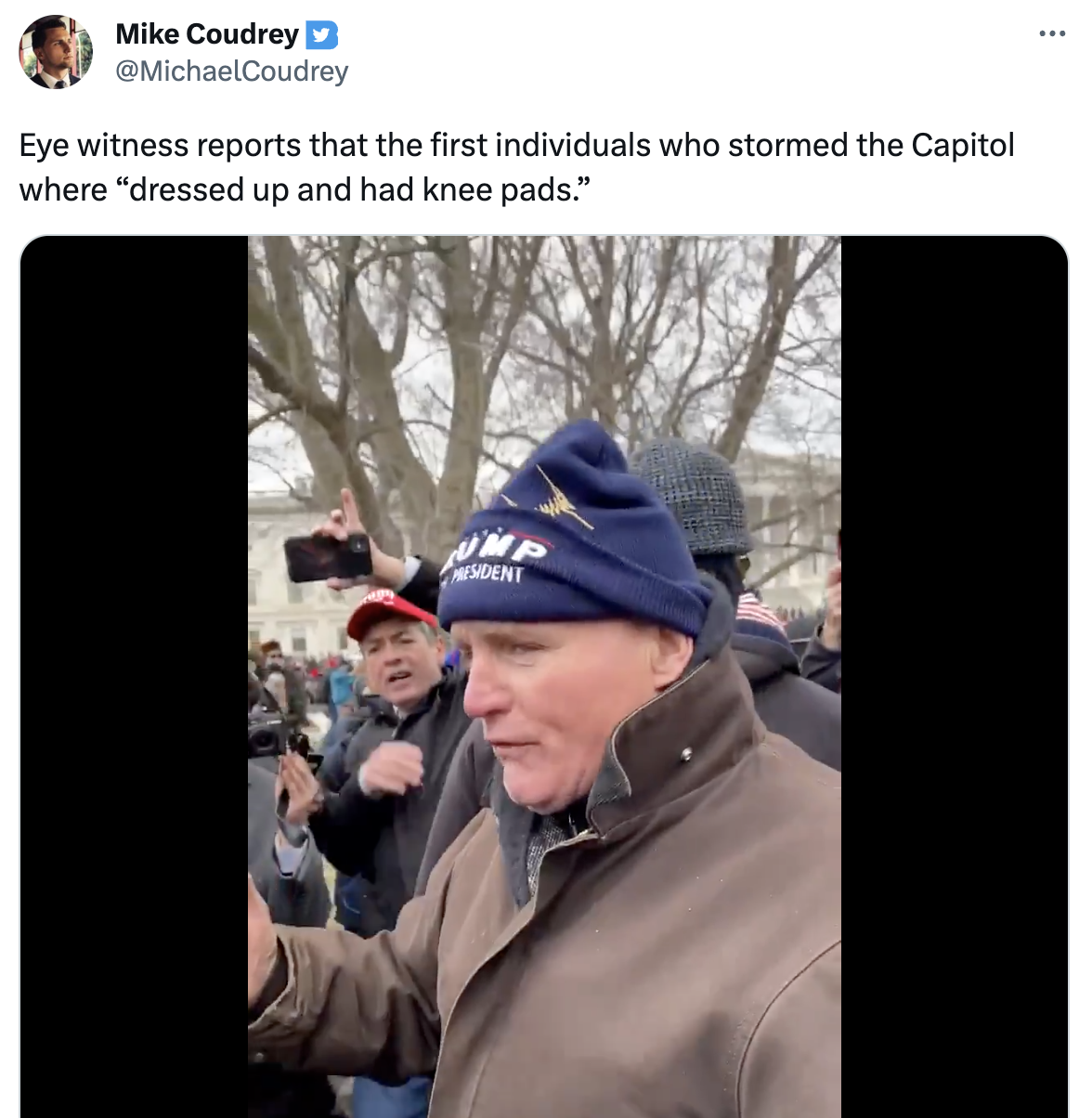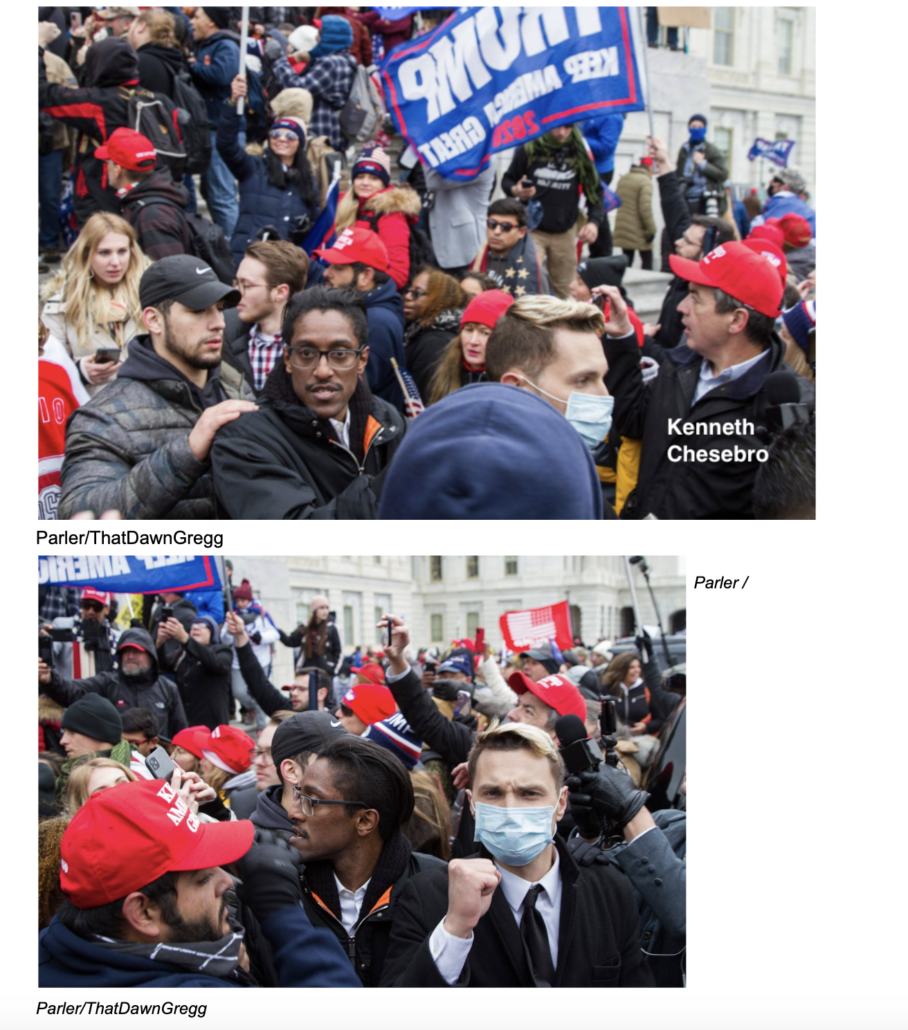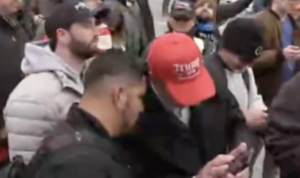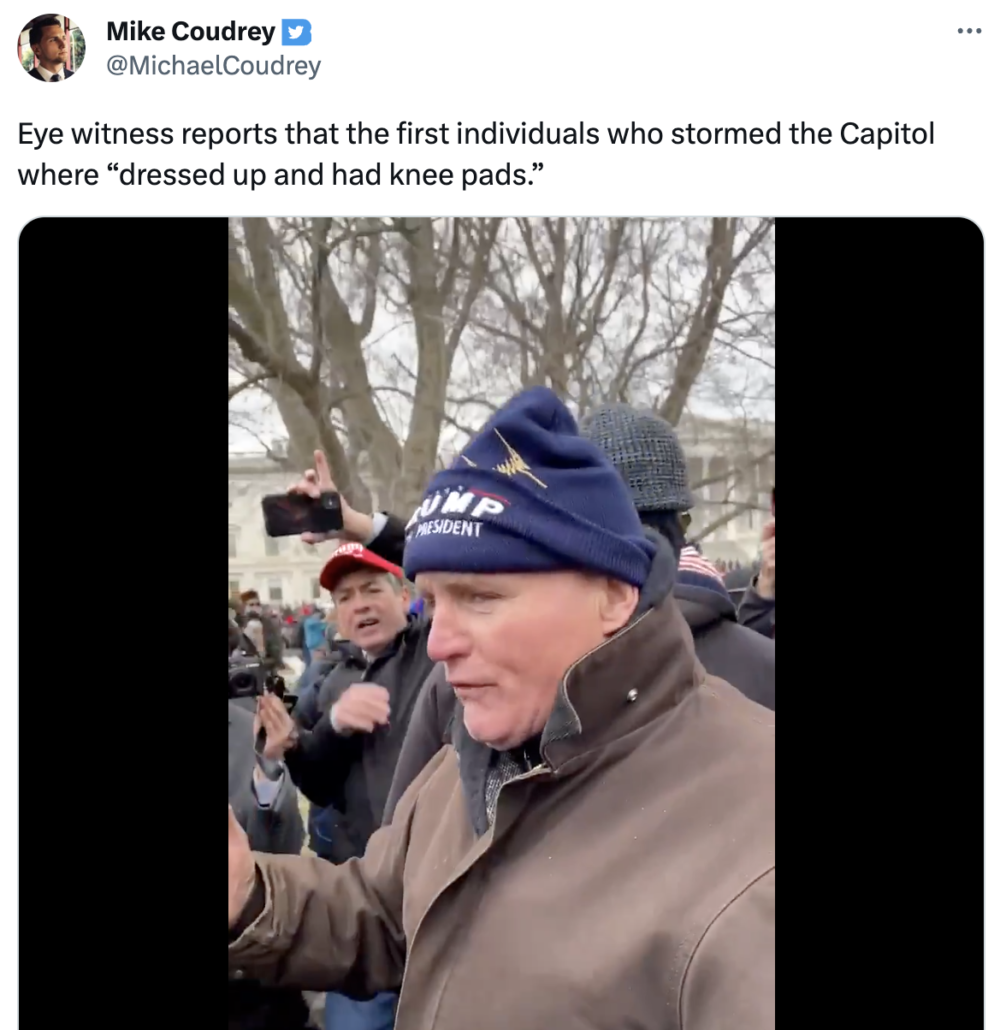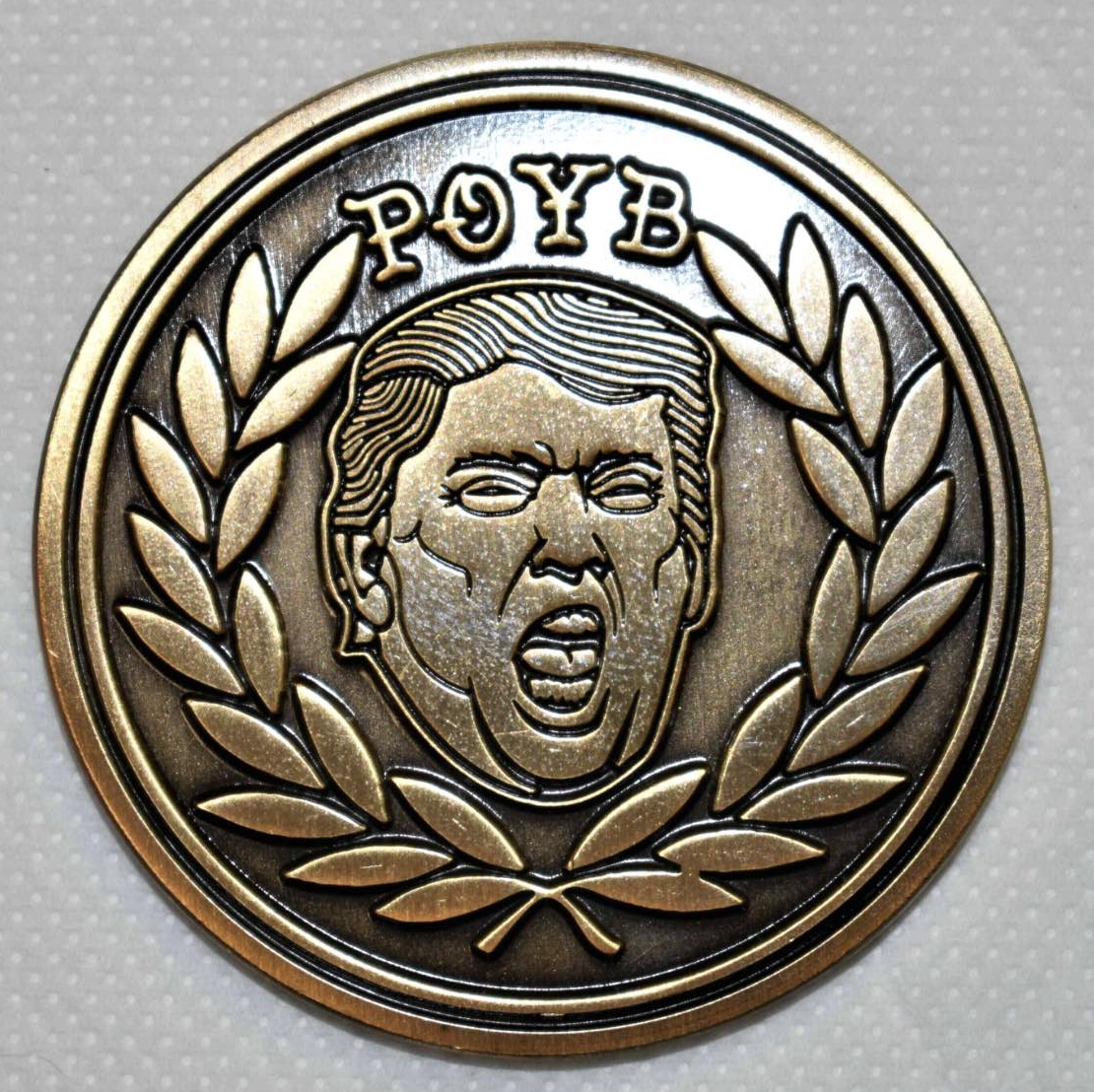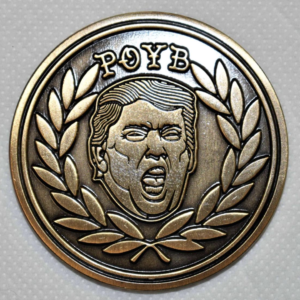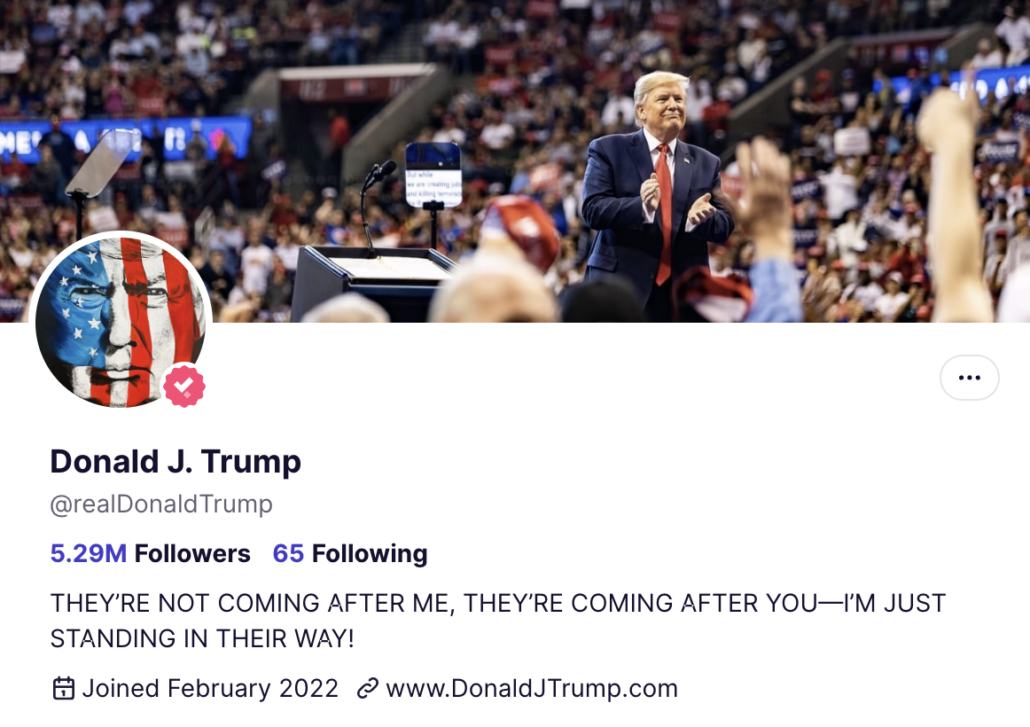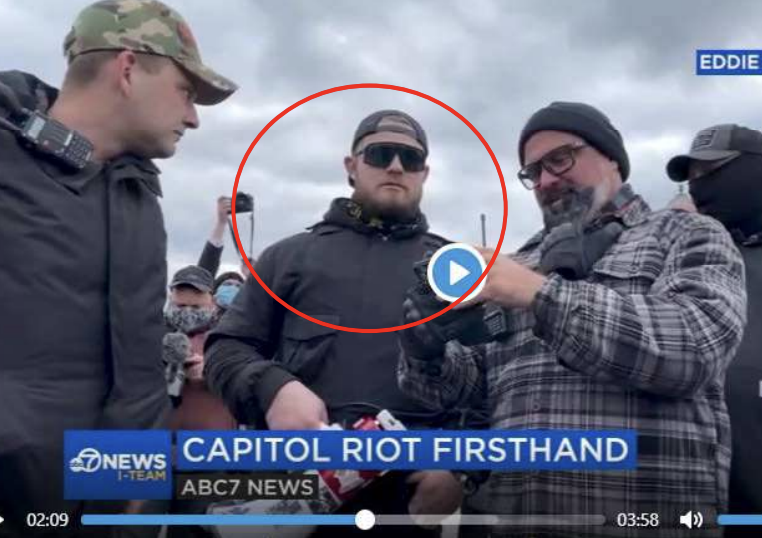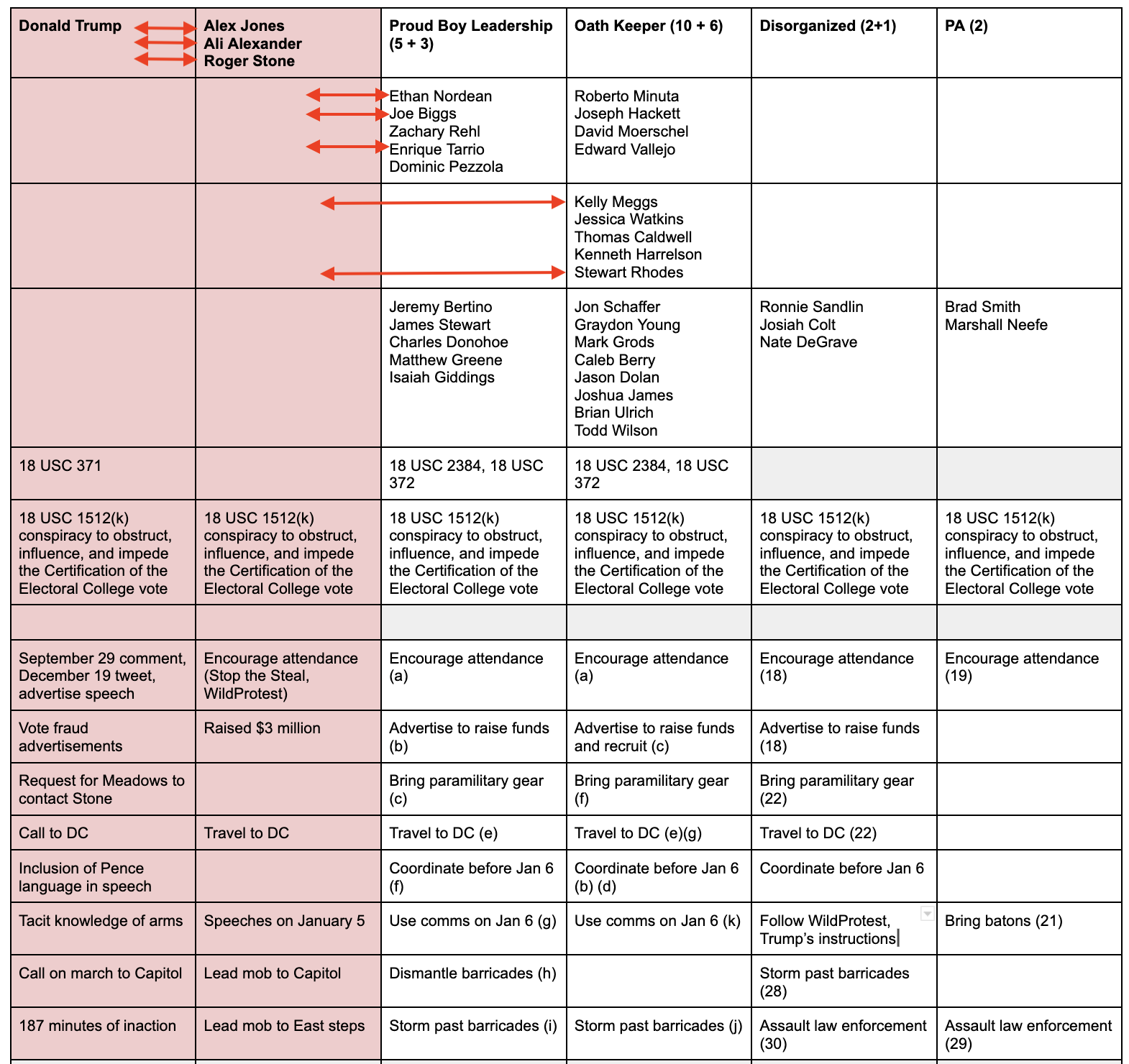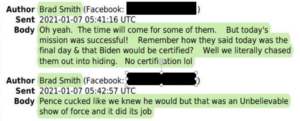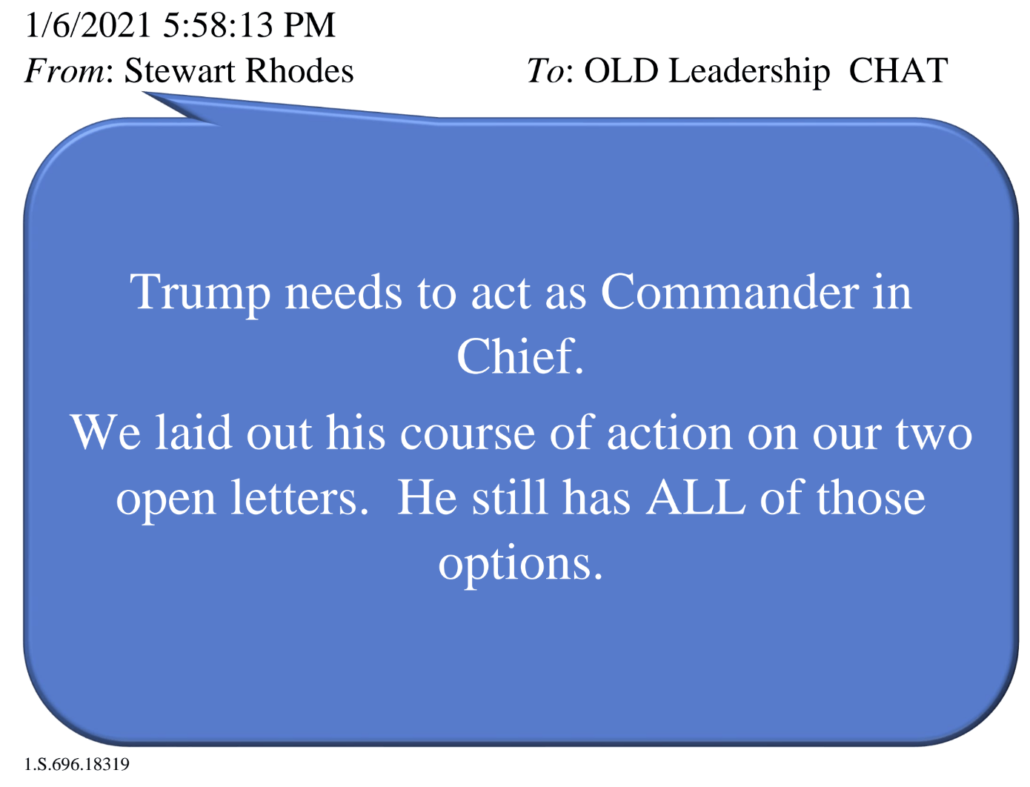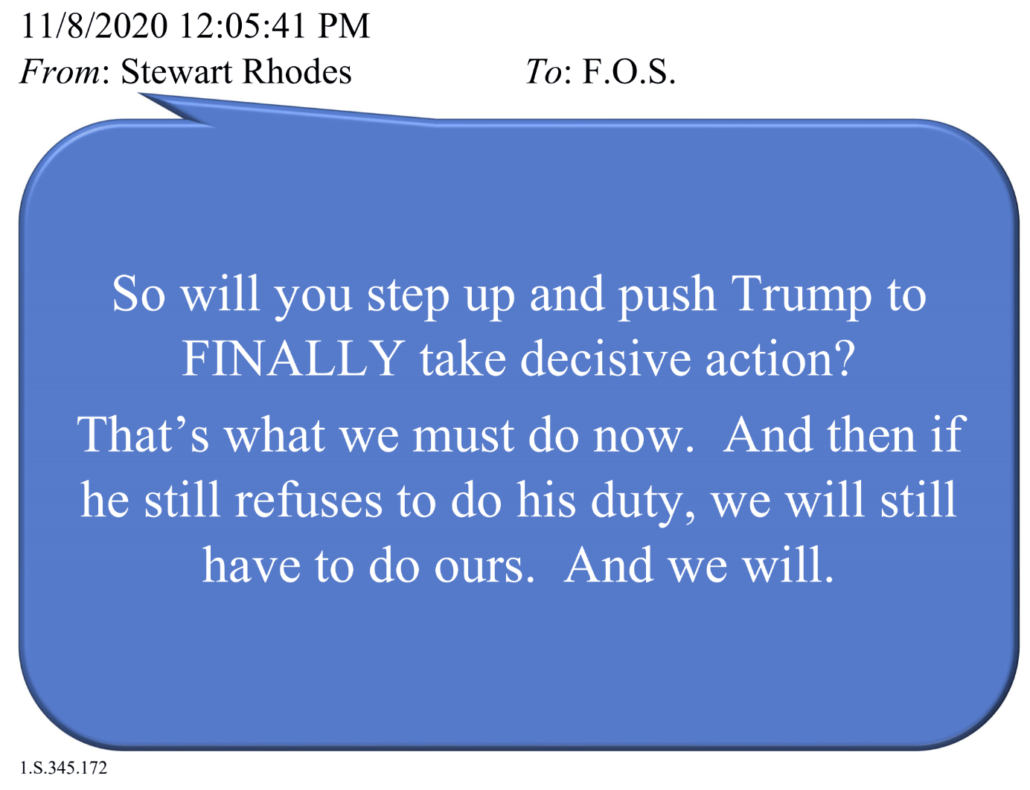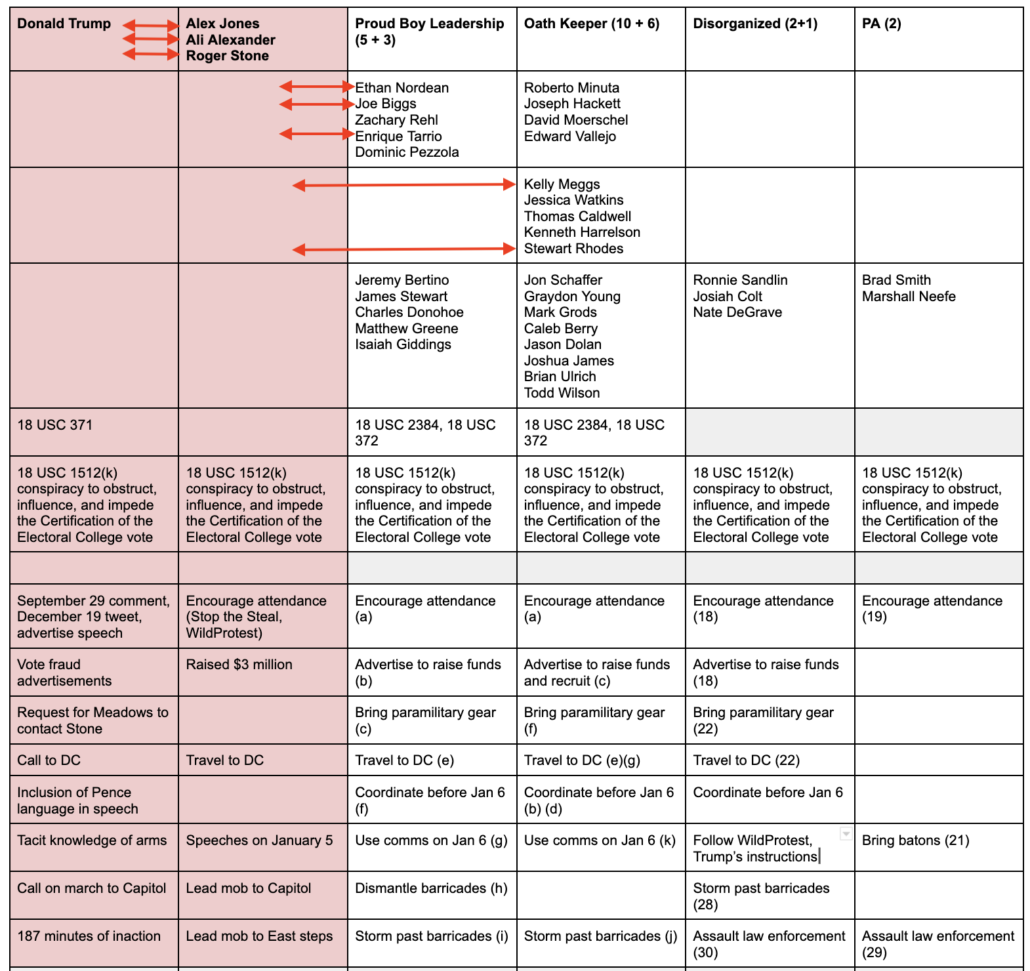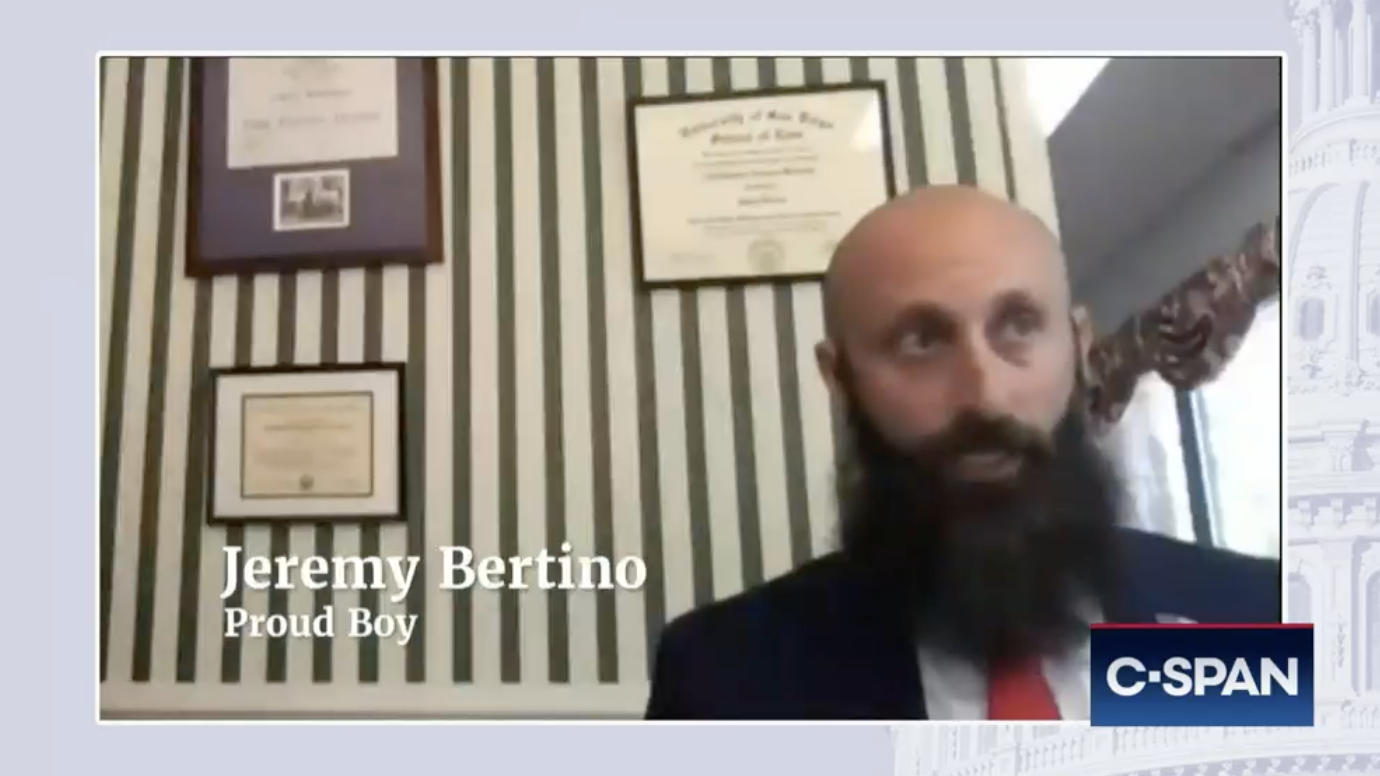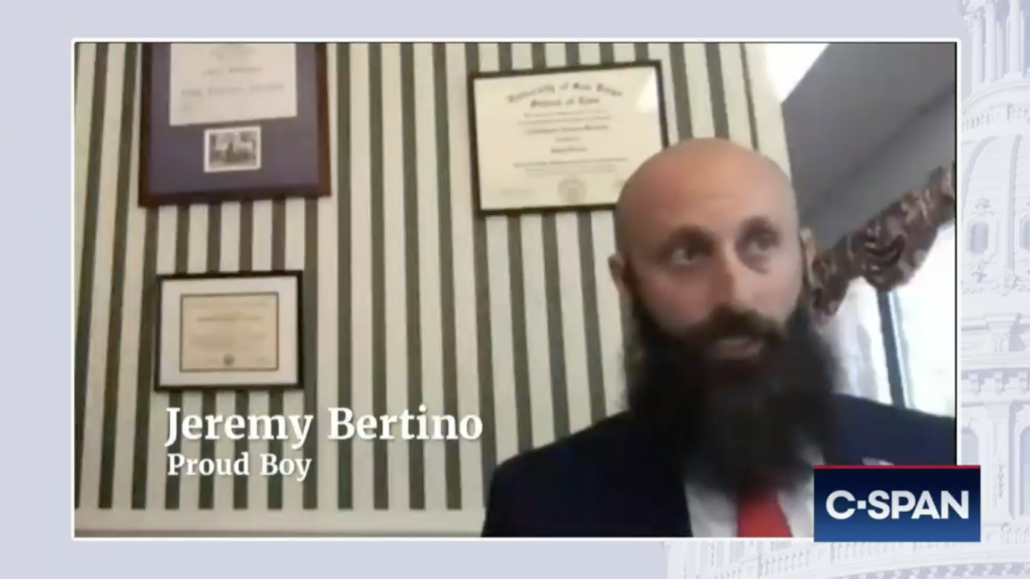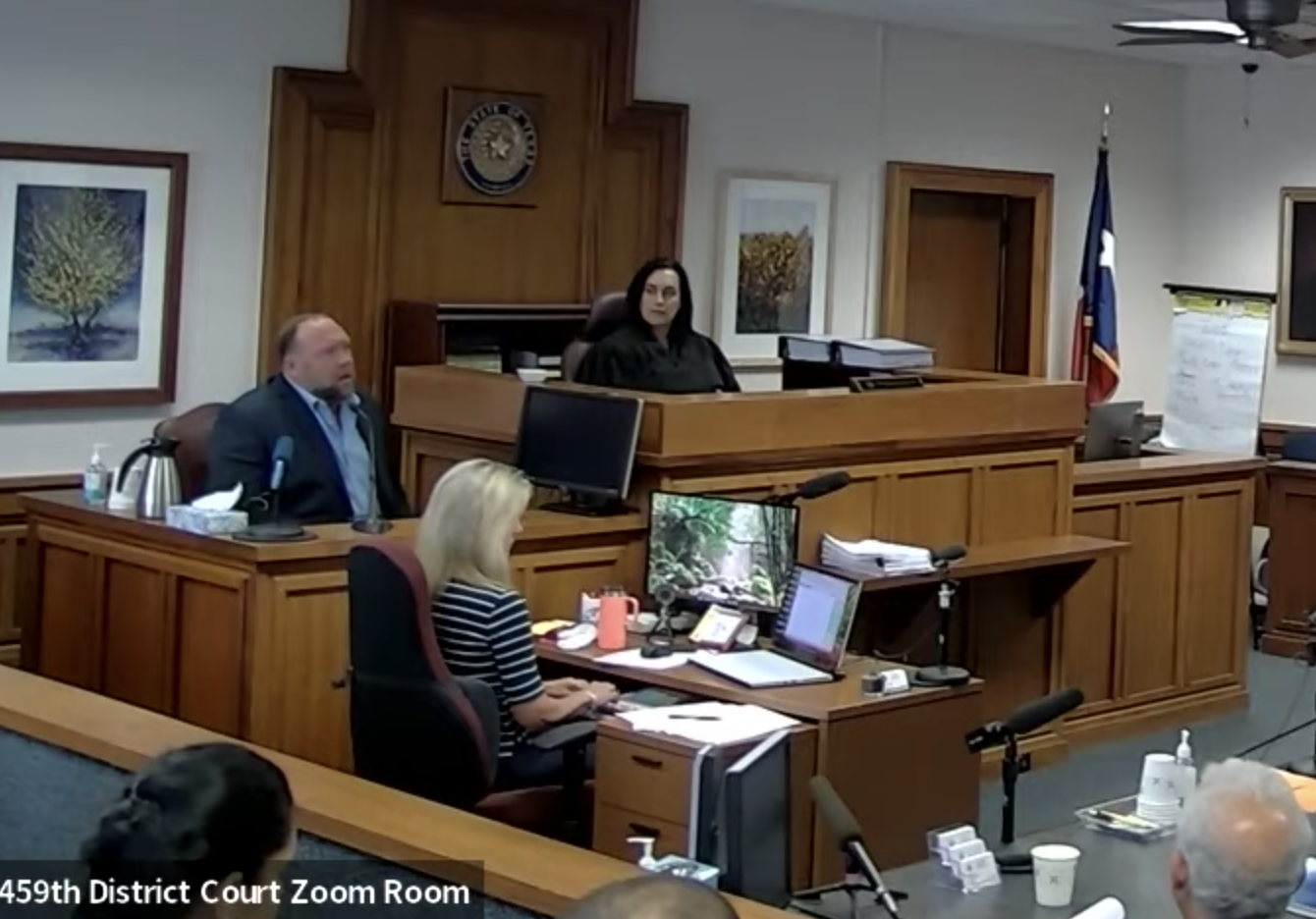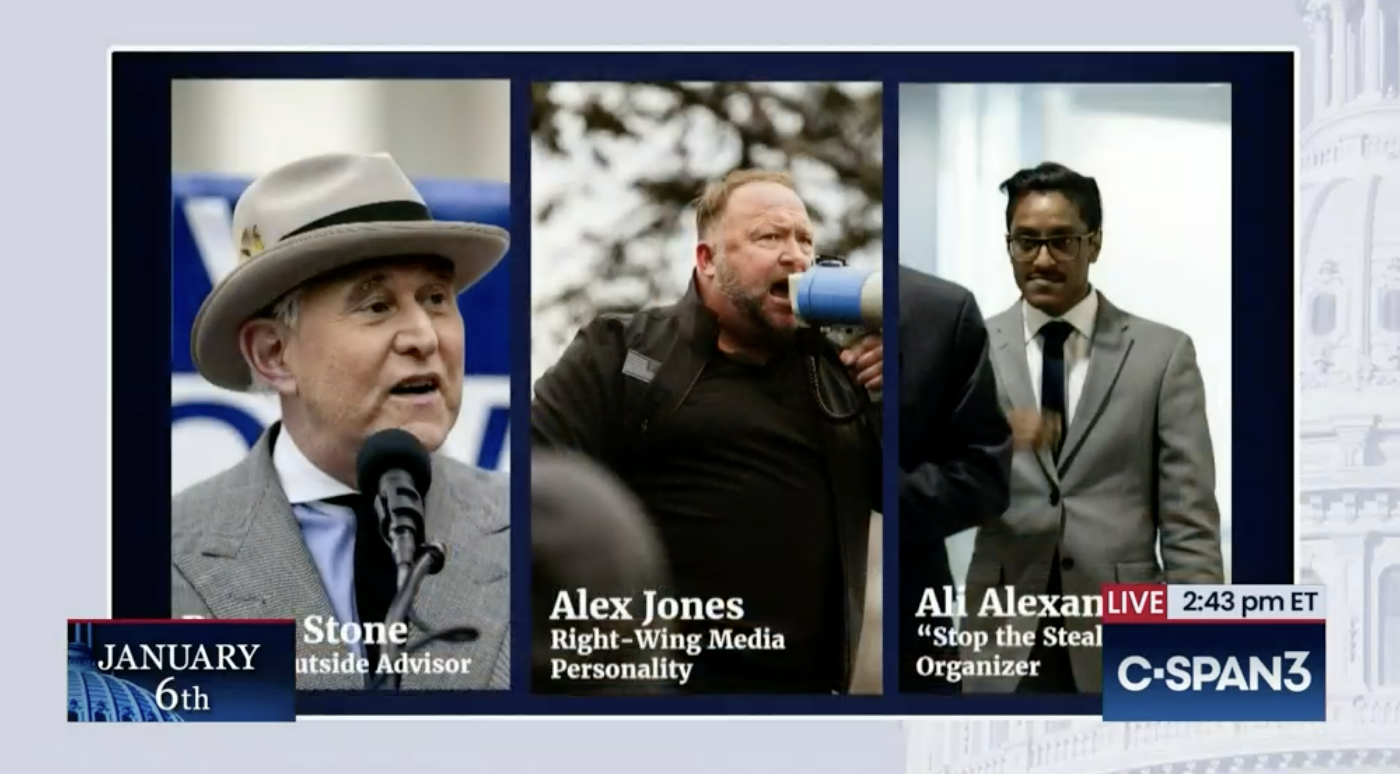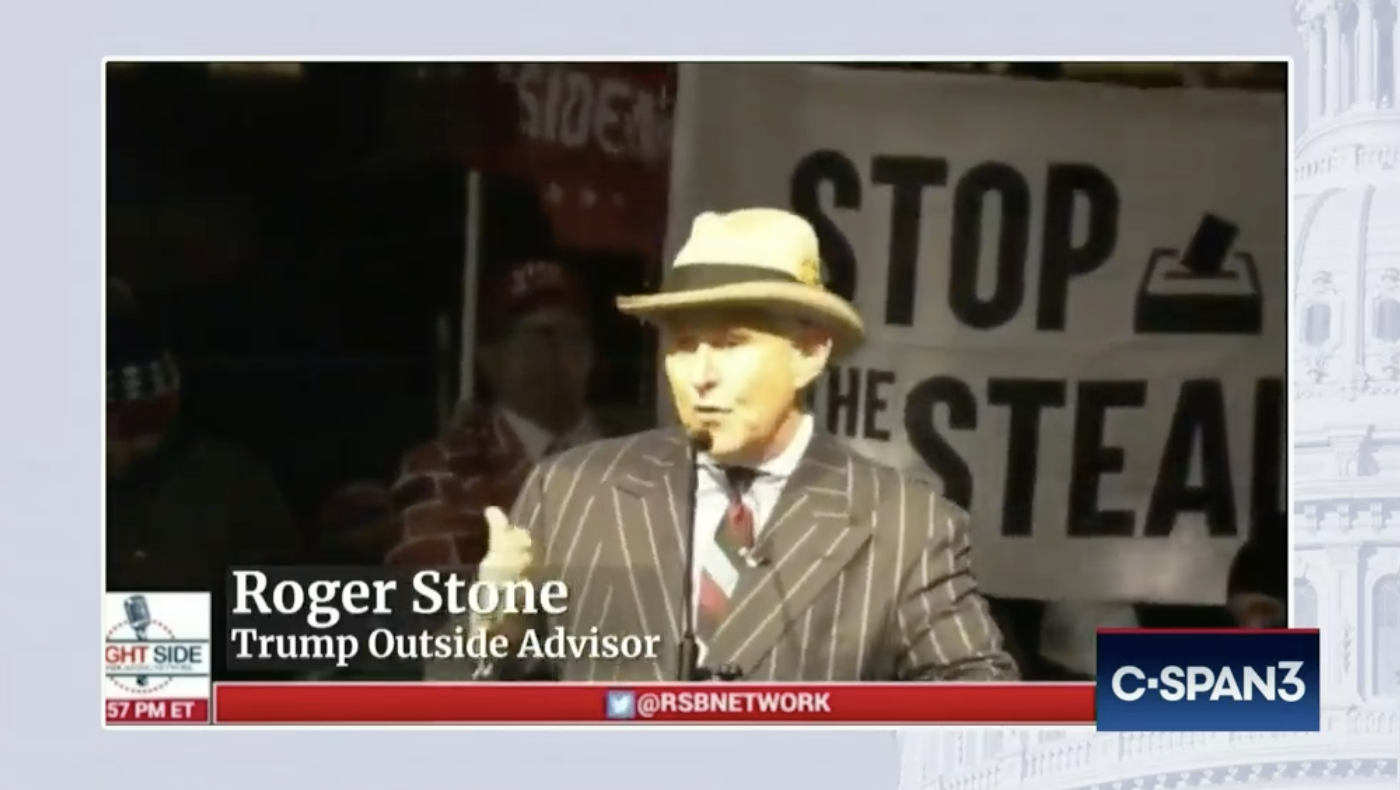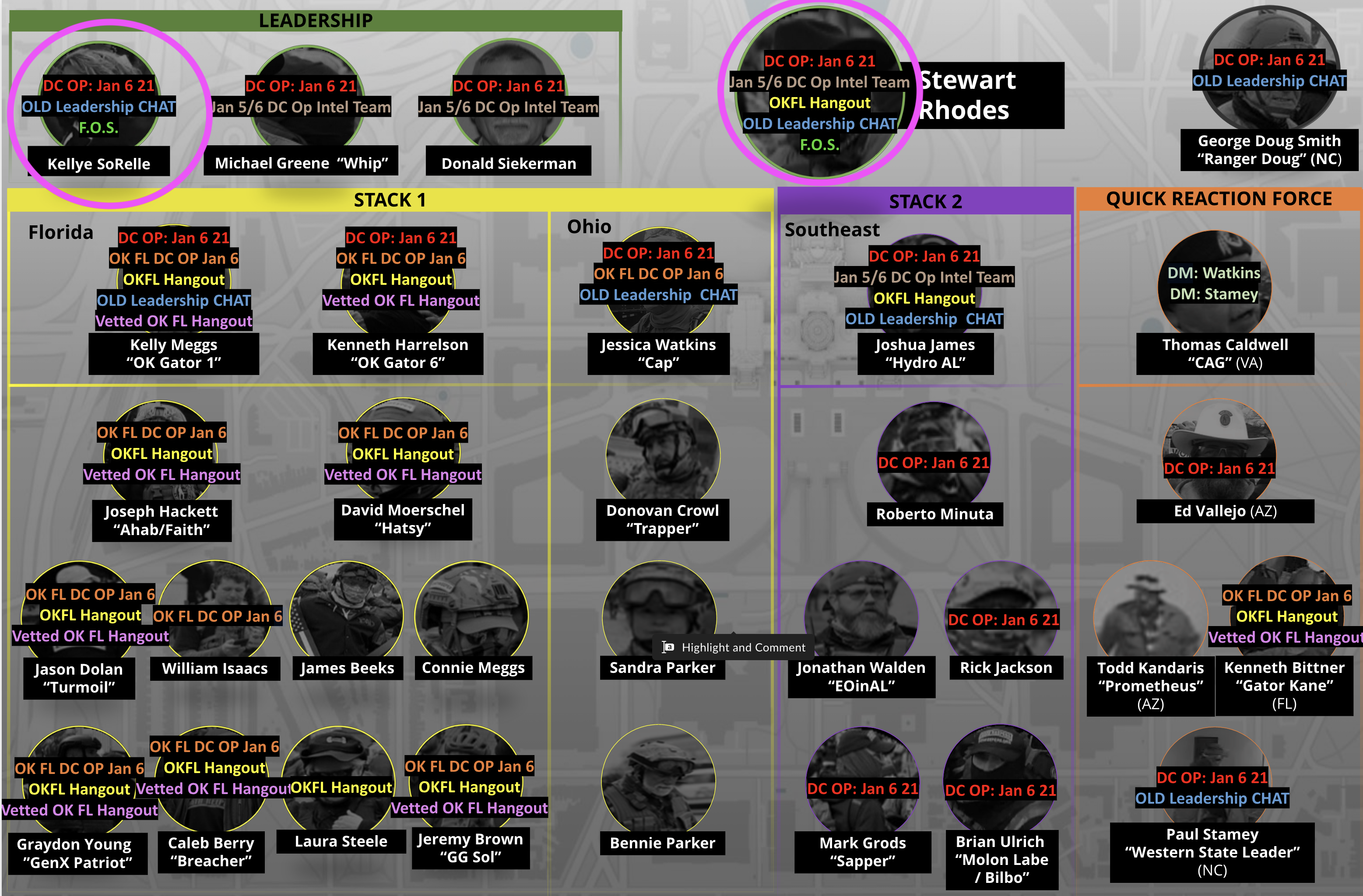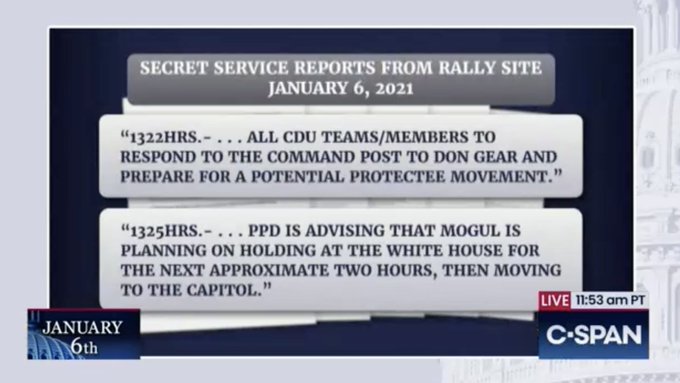Amid the release of the January 6 Committee transcripts, I’ve been vacating a bit. But I wanted to do a post on what I have been reading.
Let’s start with the fact that at 12:19PM on January 6, Ali Alexander texted Caroline Wren with a request that she update him every five minutes on POTUS’ plan to walk to the Capitol.
At 12:19 p.m. you ask Ms. Wren — so I’m assuming this is after you’ve left The Ellipse — if POTUS is walking and for her to give you an update every 5 minutes. So at 12:19 pm. on January 6th, was it your understanding that President Trump was going to come to the Capitol?
This reference is not mentioned in the final report.
Caroline Wren is the fundraiser (she reported to Kim Guilfoyle during the campaign) who arranged for Publix heir Julie Fancelli to provide $3 million in support of the rally. She provided J6C a good deal of records regarding her involvement and provided testimony that — while it shaded her knowledge of threats of violence and pitched some dodgy fundraising as a normal approach to finance — more closely resembled the truth than a lot of other witnesses. She is one of five women, along with the Kremers, Katrina Pierson, and Cindy Chafian, whose in-fighting has dominated the coverage of the planning for January 6, undoubtedly distracting from some other key players. Pierson described her as aligned with Alex Jones and the others, though in her testimony, Wren provided not unreasonable explanations for her ties to Alex Jones and Roger Stone, not least that Fancelli had donated money believing that crazies like Jones and Stone would have a big role.
It wasn’t that she was close to Jones and Stone, it’s that she was trying to meet the expectations of the donor who had paid for the whole thing.
As you no doubt know, Ali Alexander is the Roger Stone protégé who ran Stop the Steal. His December 9 testimony, at which he was represented by the lawyer who helped a Roger Stone protégé stall the Mueller investigation for a year, Paul Kamenar, is epic, hilarious, and not very honest. At times he shaded or lied to protect Roger Stone, various members of Congress, and Alex Jones. He explicitly said that he distanced himself from the White House during the post-election period so no one could blame Trump for any threats (described as political pressure, not violence) Alexander made against them.
So whenever I’m talking to a State legislator or someone, and saying this is the political fallout, I don’t want anyone to think President Trump told this kid to come up and threaten me.
He seems to suggest in his testimony that they funded buses through Turning Point to hide Stop the Steal’s involvement. His explanations for why he got the permit for his own rally under a cover name are epic.
He invented a bullshit line in response to a question about his Signal texts relating to January 6.
Q don’t recall in your production. Please correct me if I’m wrong. Did we get any Signal chats you from?
A I provided one with Charlie Kirk. ~ They auto-disappeared. That’s like a data retention policy. So don’t -in response to the committee’s investigation on the Capitol attack, and then as you guys widened it, in my opinion, to cover legally permissible events that I wanted to cooperate with this committee about like January 6th, I don’t recall having any in my possession from Signal. Most of what I did was verbal. Some of what did is in text message.
Perhaps a result, while J6C had an extended discussion about a Signal chat with Oath Keepers Alexander was privy to (one that referenced 13 people who had already been indicted by that point), they did not raise the Friends of Stone Signal chat at all during that interview.
In short, Alexander’s testimony was not all that helpful for understanding his central role in January 6.
But both Alexander and Wren provided some telephony texts to the committee, and as a result, this text was available to ask Alexander about.
At 12:19 PM on January 6, Alexander asked Wren to give him updates every five minutes on Trump’s progress. In response to the question about the text, Alexander bullshitted a bit until he explained, simply, that Wren was at the Ellipse.
A One, really appreciate you pointing out this text. This is helpful. I’s also helpful that | use the word “walking,” and you characterized it as marching before you read out the quote. And my understanding is informed by a lot of things, you know, my race, my faith, my profession. And professionally, I’m sorry to bore you guys, but professionally, in my interactions with observing Secret Service over the years, observing Democrat nominees and Republican nominees and Presidents is, something like thats just not allowed to happen But I do know that we live in interesting times. ~ And if it were to happen, I would like an advance notice. And, again, I’m sorry. I saw the faces, but I’m sorry if my answer is weird. Trying to be helpful.
Q So based upon this text, you were asking Ms. Wren, because you presume she would know if President Trump was going to walk to the Capitol?
A She was physically at The Ellipse, and I wasn’t.
Q All right.
This seemed to satisfy investigators, and they moved into where Alexander headed from there (Alexander seems to have obscured his actions during the Ellipse speech with conflicting claims, first, that he was able to move in and out of the VIP section, but also that Secret Service was limiting the number of people who were permitted to leave with him and Alex Jones via what he described as a special exit).
This text is, in my opinion, really significant. The J6C Report does not provide a very satisfying answer about the genesis of the request, which Alex Jones said came from the White House, for him to lead the march from the Ellipse to the Capitol. In significant part, it concludes that when Alexander and Jones told others they were in contact with the White House — including the request to lead the march to the Capitol — they were using shorthand for Wren, in spite of wild obfuscation from Alexander about it, his obvious ties to Stone, and his bullshit answer about how he knew what “POTUS wants.”
Q May just ask, Mr. Alexander, was there anyone other than Caroline Wren a who you were talking to at the time who claimed to be speaking on behalf of the White House that you can remember whether about this or any other aspect of that event?
A Oh man, that.
Q On behalf of the White House.
A Well, you said White House, and I haven’t said White House at all.
Q On behalf – replaying what the President’s plans were.
A There was a lot of chatter and in these situations, sometimes you’ll hear something third party and it is credible and sometimes not. ~ And, you know, as a professional in this space, somebody — what I will say is unique about Donald J. Trump to politics is everyone thinks they are his adviser, that everyone thinks they know exactly what he’s saying. It has been very widely reported that that, you know, the last thing said in his ear is the thing he’ll do. And, so, if I gave you a specific answer, it wouldn’t be doing you justice or me justice. My main point of contact with what I’m calling Trump world was Caroline Wren regarding what I consider the scope of the committee, and that’s January 6th.
To be sure, Alexander did attribute the request to Wren (though could not date it).
Q And the plan — we talked about right when we started the deposition about how you walked, marched, whatever you want to call it, from the Ellipse to the Capital, and that when it actually happened you were with Alex Jones and Owen Shroyer. Am I right?
A [Nonverbal response]
Q When did you come to know that you were going to make that movement, walk with them, those two particular men? Was it just the morning of January 6th, or had that always been the plan, that the three of you together would walk up there?
A There was no plan for Owen to walk with us.
Q okay.
A I don’t know when there was a plan. I wouldn’t even call it a plan. The idea that Roger Stone, myself, and Alex Jones would go at the end of Trump’s speech and position ourselves at the front of the overflow crowd and figuring out how logistically that worked so we didn’t have to go out the same exit as everybody was something that Caroline Wren first proposed to me — don’t know when — and I thought, okay, cool idea.
Q But before the morning of the 6th?
A Certainly we talked about the idea, yeah.
Q Okay. And did you ever talk with Mr. Jones about this before the morning of the 6th, this plan to march or walk, whatever you call it?
A I’m not sure
Q Is it possible you did and you just don’t remember?
A It’s possible.
Q Is Mr. Jones someone you would speak to on the phone, only in person, or what was the nature of the relationship?
A Yeah, would speak on the phone. I appeared on his show a few times. I could call a security guard if couldn’t get ahold of his head of security. I could call if didn’t get ahold of Alex.
Q Is that Tim Enlow?
A I know his name is Tim.
Q Okay. And for the record, E-n-l-o-w. And what do you remember before January 6th about Mr. Jones telling you, if you do remember anything, about walking from the Ellipse to the Capitol? Do you remember him saying anything about that event?
A No
Q All right. So you’ve never heard it from his lips to you that he spoke with someone in the White House or Trump about him walking from the Ellipse to the Capitol?
A don’t recall anything like that.
Q Okay. Now, are you aware that he said publicly that that happened, that he had that he was told by Trump to walk from the Capitol from the Ellipse to the Capitol?
A I’m not aware of that. Alex is prone to exaggeration and/or could have been referencing Caroline Wren.
Q Understood. When it comes to Mr. Stone, do you know — he has said publicly that he was told, whether by Trump or the White House, that he was going to lead or be a part of leading the walk from the Ellipse to the Capitol. Are you aware that he said that publicly?
A I believe so.
Q All right. Did he ever talk to you about that before January 6th, what his thoughts or what his beliefs were about what was going to happen in terms of that march?
A Not to the best of my recollection.
Q So whether anybody –whether Trump or the White House told him that he was going to be part of that march?
A Again, I think this was an idea, as best that I understood it, that originated with Caroline, pinged off me, I said okay, and then was given to Alex and Roger, if it was given to them at all. I could have given –I could have talked to them about it.
Q That’s why we’re asking.
A Okay. Yeah, l don’t know.
Q We’re trying to understand.
A Yeah. And don’t know what the play byplay of all of that was.
The Report doesn’t rely on any of this blather from Alexander for its conclusion that Wren is probably the one who requested that Jones et al lead the mob to the Capitol. They rely primarily on Wren, and an Alex Jones broadcast that should be treated with the same reliability as his claims that Sandy Hook victims were crisis actors.
It is likely that both got that idea from Caroline Wren, a Republican fundraiser who helped organize the Ellipse event.111 Jones texted Wren at 12:27 p.m., asking when he should leave the Ellipse and begin the march.112 While Wren originally expected Jones, Roger Stone, and retired Lt. Gen. Michael Flynn to march to the Capitol, Stone did not attend the Ellipse rally and so he was not present to accompany Jones on the march as planned.113 Additionally, while President Trump was delivering his speech, Wren askedFlynn if he was going to march with Jones. Flynn responded, “Hell, no. It’s freezing.”114
While Stone and Flynn did not march, Jones and Alexander led others to the Capitol, though it is not clear how many people followed them.115
112. Select Committee to Investigate the January 6th Attack on the United States Capitol, Deposition of Alexander Jones, (Jan. 24, 2022), Ex. 13 at 0:29 (Excerpt from The Alex Jones Show on Jan. 7, 2022); Documents on file with the Select Committee to Investigate the January 6th Attack on the United States Capitol (Caroline Wren Production), REVU_000475 (Jan. 6, 2021, Alex Jones text message to Caroline Wren); Documents on file with the Select Committee to Investigate the January 6th Attack on the United States Capitol (Caroline Wren Production), REVU_000484 (Jan. 5, 2021, Tim Enlow text message to Caroline Wren).
113. Select Committee to Investigate the January 6th Attack on the United States Capitol, Deposition of Caroline Wren, (Dec. 17, 2021), p. 244.
114. Select Committee to Investigate the January 6th Attack on the United States Capitol, Deposition of Caroline Wren, (Dec. 17, 2021), p. 244.
Perhaps they found Wren more credible than Alexander, which she is. Except according to her version, it would be impossible for Alexander to have floated the idea to Stone and Jones, because in her telling, he was added on at the last minute, and not because he was a key part of Jones’ retinue, but because he had a rally to run.
Q But, at some point, you have conversations with Alex Jones or All Alexander, right, about how are you going to get them out of the VIP area so they can get to the Capitol?
A Right
Q And what do those discussions include?
A Alex wanted to go with Roger Stone. Ali wasn’t really a part of that Ali — so now — I didn’t really get the sense that Ali and Alex like knew each other very well or — like, it was never a group text. Like, the conversations were kind of isolated. So I just never — they may be very good friends, they might not know each other. So — but Alex Jones’ expectation was that he and Roger Stone would lead a march from the Ellipse to their rally at the Capitol. That also was Ali’s rally or something. And — but ~ and they’d asked about like directions or things to do. And those were things I never could get or did get answers to. [my emphasis]
I won’t get into all the ways that this testimony is inconsistent with the relationship that Wren described that she had with Alexander, or the reasons why.
Just understand, for the moment, that the J6C conclusion that the White House requested this probably came from her is not consistent with the documentary or testimonial record and comes in the face of Jones and Stone refusing to cooperate and the fact that everyone was lying about Signal text communications, including known “group texts” of the sort that Wren disavows possibility of.
More importantly, because J6C was so determined to come up with some conclusion about who directed Jones to lead the mob to the Capitol, it ignored several things.
First, even ignoring Roger Stone’s likely role in all this, Alexander told J6C he had another White House source: Garrett Ziegler. In fact, his attribution of stuff to Wren came specifically with a disavowal of Ziegler’s role in all this.
The person that talked to was Caroline Wren, and to make a duplicative effort to me would seem a waste of resources or my time. I talk to hundreds of people probably a day. I mean, I was like the busiest person in America. I know some people don’t like that, but a lot of other people love it. And another gentleman I talked to at the White House was — and we did talk about election integrity, but I don’t recall talking about the 6th – Garrett Ziegler, who worked for Mr. Navarro. And I know we talked about election integrity. I don’t recall talking to him about the 6th or the 5th. And I don’t see how he would be in any authority to kind of do anything like that.
Alexander did attribute his understanding of events about January 6 in December to Ziegler, however.
Q So, on December 19th, what people from the White House were you in contact with?
A I don’t know who I was referencing. Mary [sic] — maybe it was Garrett Ziegler.
Q I don’t see Garrett Ziegler in any of your productions. Was it a phone call –
A We
Q I was going to say was it a phone call, was it a text message, or was it an email?
A I believe having the phone call with him. I don’t remember receiving any emails from him.
Ziegler, recall, was the guy who let Mike Flynn and Sidney Powell into the White House on December 18, hours before Trump first tweeted about the January 6 event that Alexander was (per his own testimony) already planning.
In spite of the possibility that Ziegler was another White House contact with Alexander during this period, in his own deposition — scheduled in July, at a time when J6C would have had a much clearer idea of the problems with Alexander’s testimony, especially — no one asked him about Alexander (or Jones or Stone), at all. To be sure, Ziegler invoked the Fifth about everything. He wouldn’t have answered any questions in any case. But neither in Alexander’s deposition nor in Ziegler’s do they pursue the possibility that he might have had a more central role in this than they let on (though there are a few others that’s true of as well).
What I’m interested in is the more alarming possibility: that Alexander’s request for five minute updates on Trump played a part in execution that day.
As noted above, the report does not mention that Alexander asked Wren for five minute updates on the movements of the President.
It also does not mention that at 12:59, Wren texted Alexander and told him “POTUS not walking.”
Q Thats fine. We saw a text message earlier you saw where Caroline Wren told you
A What time was it at?
Q 12:59, POTUS not walking. Do you remember that?
J6C uses this to establish that when Alex Jones used the promise that Trump would speak on the East side of the building to lure people to form a second front, Alexander, at least, had the expectation Trump would not come (though that overstates things — this text would have been before the confrontation in the limo and this text could have meant only that Trump was not walking but might ride to the Capitol).
But they ignore another possibility: that Alexander and Jones and Owen Shroyer (the latter of whom now shares an attorney with Joe Biggs) were relaying updates to people at the Capitol.
The report does lay out, for example, how much traffic was passing between the Jones group and the Proud Boys based on the limited telephony call records they managed to obtain (though it rather infuriatingly doesn’t provide the times of these communications).
Proud Boys were among the crowd Jones gathered during his march. Matthew Walter, president of a Tennessee chapter of the organization,122 was near the National Mall with two other Proud Boys from Tennessee and decided to join Jones.123 Other, more prominent members of the Proud Boys appear to have been in contact with Jones and Shroyer about the events of January 6th and on that day. Records for Enrique Tarrio’s phone show that while the attack on the Capitol was ongoing, he texted with Jones three times and Shroyer five times.124 Ethan Nordean’s phone records reflect that he exchanged 23 text messages with Shroyer between January 4th and 5th, and that he had one call with him on each of those days.125 Records of Joseph Biggs’s communications show that he texted with Shroyer eight times on January 4th and called him at approximately 11:15 a.m. on January 6th, while Biggs and his fellow Proud Boys were marching at and around the Capitol.126
122. Select Committee to Investigate the January 6th Attack on the United States Capitol, Deposition of Matthew Walter, (Mar. 9, 2022), p. 78.
123. Select Committee to Investigate the January 6th Attack on the United States Capitol, Deposition of Matthew Walter, (Mar. 9, 2022), p. 75.
124. Documents on file with the Select Committee to Investigate the January 6th Attack on the United States Capitol (Google Voice Production, Feb. 25, 2022).
125. Documents on file with the Select Committee to Investigate the January 6th Attack on the United States Capitol (Verizon Production, Nov. 19, 2021).
126. Documents on file with the Select Committee to Investigate the January 6th Attack on the United States Capitol (AT&T Production, Nov. 24, 2021).
And this summary of communications does not include comms using other than telephony (like Signal texts or radios).
At the very least, the information Wren passed to Alexander may have influenced Jones’ decision to hold up at Freedom Plaza for a period, before continuing on to the Capitol. But given the solid evidence that former Infowars employee Biggs was coordinating with this group, it seems likely that Alexander’s information got shared with those modulating the attack on the Capitol.
In other words, it’s not just that someone asked Alex Jones to lead the mob to the Capitol. It’s not just that, when he arrived, Alex Jones moved them to the East side where hundreds played a role in the second major front of the attack. But it’s that Jones and Alexander easily could have relayed information from those handling Trump to those handling the mob at the Capitol.
For a year, I’ve been describing how the relationship between the Proud Boys and Alex Jones’ crew was a pivot between the mob and the President, one through which DOJ could charge a conspiracy with those who attacked cops and stormed the Capitol. That’s all pending the outcome of the Proud Boy Leader trial, opening arguments for which start this week. It’s a complex trial and I have no idea what to expect.
As J6C releases transcripts, we’ve learned that Jones’ role was even more central than I imagined. While J6C doesn’t focus enough on the role of the Stop the Steal events in posing a real threat to legislators who ignored Trump, the transcripts do reveal more details about how Alexander deployed that threat. Jones was central to Julie Fancelli’s decision to fund the event. According to Alexander, about a third of the mob were Jones’ fans. In spite of months of effort, J6C was never able to explain how or who gave the order to Jones to lead the mob to the Capitol (and the Ziegler silence and the Stone disinterest are not the only gaps in their efforts to explain it so far).
J6C’s failure to answer that question was largely attributable to the efforts, by virtually all those personally involved, to obstruct the investigation. DOJ has some, but not unlimited, tools to overcome such obstruction (including several cooperating witnesses from both primary militia conspiracies and full exploitation of several phones involved, including those of Enrique Tarrio and Owen Shroyer).
Jones’ (and Alexander’s and Stone’s) roles look just as important to understanding the plan on January 6 as they did a year ago. But there’s even more reason to believe that Jones was not just a dumb guy with a megaphone leading sheep to slaughter. Jones and Alexander were in a position to help those kicking off the attack account for the involvement — or not — of the President.
Back-up material
Ali Alexander: Live tweet; December 9, 2021 transcript
Julie Fancelli: Live tweet; February 18, 2022 transcript
Alex Jones: January 24, 2022 transcript
Charlie Kirk: May 24, 2022 transcript
Roger Stone: December 17, 2021 transcript
Caroline Wren: Live tweet; December 17, 2021 transcript
Garret Ziegler: Post; July 19, 2022 transcript



